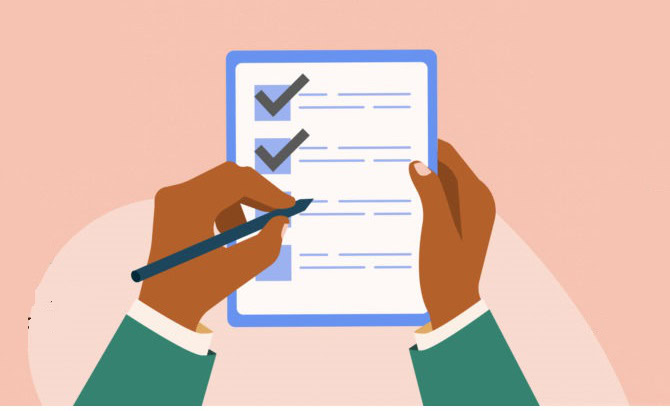Employee onboarding is the process of integrating new employees into an organization and ensuring they have the necessary tools, resources, and information to be successful in their roles. It is a critical step in the employee lifecycle as it sets the tone for the employee’s experience and can greatly impact their engagement and productivity. An onboarding checklist is a valuable tool that helps organizations streamline and standardize the onboarding process, ensuring that all necessary steps are taken to effectively onboard new hires.
Having an onboarding checklist is important for several reasons. First, it helps ensure that all necessary tasks are completed in a timely manner, reducing the risk of important steps being overlooked. This can include tasks such as completing paperwork, conducting background checks, and providing access to necessary resources.
Second, an onboarding checklist helps create a consistent experience for all new hires, regardless of their role or department. This consistency, achieved through a well-designed onboarding checklist template, helps set expectations and ensures that all employees receive the same level of support and information.
Finally, an onboarding checklist can help organizations track and measure the effectiveness of their onboarding process flow, identifying areas for improvement and making adjustments as needed.
Onboarding Checklist - Pre-Employment Preparation

Before a new employee starts their first day, there are several important tasks that need to be completed. This includes conducting background checks and verifying employment history, education credentials, and references. Background checks are essential for ensuring that new hires have the necessary qualifications and do not have any criminal history that could pose a risk to the organization or its employees.
In addition to background checks, there is also paperwork and documentation that needs to be completed before a new employee can start. This includes tax forms, employment contracts, confidentiality agreements, and any other legal documents required by the organization or industry regulations, which should be part of a comprehensive new hire onboarding checklist. Providing new hires with these documents ahead of time allows them to review and complete them at their own pace, reducing stress and ensuring accuracy.
Communication with new hires is also crucial during this pre-employment phase. This includes providing them with information about their start date, time, and location, as well as any other logistical details they need to know. It is also an opportunity to welcome them to the organization, making them feel welcome, and provide them with any additional information or resources they may need to prepare for their first day.
Orientation and Welcome Programs for Employee onboarding

Once a new employee starts their first day, it is important to provide them with a comprehensive orientation and welcome program. This includes introducing them to the company’s history, mission, and values. This helps new hires understand the organization’s culture and what is expected of them as employees. It also helps them feel connected to the organization and its purpose.
A tour of the workplace is also an important part of the orientation process. This allows new hires to familiarize themselves with their surroundings and locate important areas such as restrooms, break rooms, and emergency exits. It also provides an opportunity for them to meet colleagues from different departments and get a sense of the overall company culture.
Introducing new hires to their colleagues and managers is another crucial step in the onboarding process. This can be done through formal introductions or informal meet-and-greet sessions. Building relationships with colleagues and managers early on helps new hires feel supported and connected to the team. It also provides an opportunity for them to ask questions, seek guidance, and receive feedback.
Job Training and Skill Development
Once new employees have been oriented to the organization, it is important to provide them with job-specific training. This includes teaching them the skills and knowledge they need to perform their roles effectively. Job training can take various forms, including hands-on training, shadowing experienced employees, or attending workshops or seminars.
Cross-training opportunities are also valuable for new hires. This involves exposing them to different areas of the organization and providing them with opportunities to learn new skills or gain experience in different roles. Cross-training not only helps new hires develop a broader skill set, but it also helps them understand how their role fits into the larger organization and promotes collaboration and teamwork.
Professional development resources should also be made available to new hires. This can include access to online courses, industry conferences, or mentorship programs. Providing new employees with opportunities for ongoing learning and growth not only benefits them individually but also contributes to the overall success of the organization.
Understanding Company Culture and Values for New Hire
In addition to job-specific training, it is important for new hires to understand the company’s culture and values, facilitating successful onboarding. This includes explaining the organization’s mission, vision, and core values, as well as its expectations for employee behavior and conduct. Understanding the company’s culture and values helps new hires align their own values with those of the organization, fosters a sense of belonging and purpose, and is a key aspect of effective onboarding.
Integration into the company culture, facilitated through various means, is a crucial part of effective onboarding. This can include assigning new hires a mentor or buddy who can help guide them through their first few weeks or months on the job. It can also involve encouraging participation in company events and activities, such as team-building exercises, volunteer opportunities, or social gatherings. These activities help new hires build relationships with their colleagues and feel like part of the team.
Encouraging participation in company events and activities is not only beneficial for new hires but also for the organization as a whole. It helps foster a sense of community and camaraderie among employees, which can lead to increased engagement, collaboration, and productivity.
Setting Performance Expectations and Goals

Setting clear performance expectations is essential for new hires to understand what is expected of them in their roles. This includes explaining job responsibilities, performance metrics, and any specific goals or targets they need to meet. Clearly communicating expectations helps new employees focus their efforts and ensures that they are aligned with the organization’s goals.
Setting SMART (Specific, Measurable, Achievable, Relevant, Time-bound) goals is also important for new hires. This helps them understand what they need to accomplish and provides a framework for tracking their progress. SMART goals are specific and well-defined, making it easier for employees to understand what is expected of them and how their performance will be evaluated.
Providing feedback and coaching is another important aspect of setting performance expectations. Regular check-ins with managers allow new hires to receive feedback on their performance, ask questions, and seek guidance. This feedback helps new employees understand how they are progressing and provides an opportunity for them to make any necessary adjustments or improvements.
Providing Access to Resources and Tools to New Employee

To perform their roles effectively, new hires need access to the necessary resources and tools. This includes providing them with access to technology and software that they will be using in their roles. This can include email accounts, project management tools, or industry-specific software. Providing new hires with the necessary technology and software ensures that they can hit the ground running and reduces any potential delays or frustrations.
Access to company policies and procedures is also important for new hires. This includes providing them with an employee handbook or other documentation that outlines the organization’s policies, procedures, and guidelines. This helps new employees understand what is expected of them in terms of behavior, attendance, dress code, and other important aspects of their employment.
Access to HR and benefits information is another crucial aspect of onboarding, which should be systematically organized through an onboarding template. New hires should be provided with information about their benefits package, including health insurance, retirement plans, and any other perks or incentives offered by the organization. They should also be given contact information for the HR department so that they can ask questions or seek assistance as needed.
Building Relationships with Colleagues and Managers
Building relationships with colleagues and managers is an important part of the onboarding process. Encouraging team-building activities helps new hires get to know their colleagues on a personal level and fosters a sense of camaraderie and collaboration. This can include activities such as team lunches, icebreaker games, or team-building exercises.
Providing opportunities for networking is also valuable for new hires. This can include attending industry events or conferences, joining professional organizations, or participating in company-sponsored networking events. Networking allows new employees to expand their professional network, learn from others in their field, and potentially identify new opportunities for growth or advancement in their new role.
Encouraging open communication is another important aspect of building relationships with colleagues and managers. New hires should feel comfortable asking questions, seeking guidance, and providing feedback. Creating a culture of open communication helps foster trust and collaboration and ensures that new employees feel supported and valued in their new role.
Tracking Progress and Feedback
Tracking the progress of new hires is important to ensure that they are successfully integrating into their roles and the organization as a whole. Regular check-ins with managers allow for ongoing feedback and provide an opportunity to address any concerns or challenges that may arise. These check-ins can be formal meetings or informal conversations, depending on the needs and preferences of the employee and manager.
Performance evaluations should also be conducted at regular intervals to assess the progress and performance of new hires. This provides an opportunity to recognize achievements, identify areas for improvement, and set goals for future development. Performance evaluations should be based on clear criteria and provide constructive feedback that helps new employees grow and develop in their roles.
Opportunities for feedback and improvement should be provided throughout the onboarding process, utilizing an onboarding template for consistency. This can include surveys or feedback forms that allow new hires to provide input on their onboarding experience. Feedback should be actively sought and valued by the organization, as it provides valuable insights into the effectiveness of the onboarding process and areas for improvement, highlighting the need for an adaptable onboarding checklist template.
Continuing Support and Engagement
Onboarding is not a one-time event but rather an ongoing process. Things will get easier if you can automate your employee onboarding process. Providing ongoing support and engagement is crucial for ensuring that new hires continue to feel supported and valued as they settle into their roles. This can include providing ongoing training and development opportunities that help new employees continue to grow and develop in their careers.
Encouraging participation in company events and activities is another way to foster ongoing engagement and make new hires feel welcome. This can include team-building exercises, volunteer opportunities, or social gatherings. These activities help new hires feel connected to the organization and its culture and provide opportunities for them to build relationships with their colleagues, contributing to successful onboarding.
Providing opportunities for career advancement in their new role is also important for ongoing support and engagement. This can include offering mentorship programs, providing access to professional development resources, or creating a clear career path within the organization. Providing new hires with opportunities for growth and advancement not only benefits them individually but also contributes to the overall success of the organization.
Conclusion
A well-organized and comprehensive onboarding checklist is more than just a list of tasks to be completed – it is the key to successful personnel file management. Ensuring that all necessary paperwork is collected and organized, important information is communicated and understood, and new employees feel welcomed and supported sets the tone for a positive and productive work environment.
By following a structured onboarding checklist, organizations can streamline the onboarding process, reduce errors and oversights, and ultimately save time and resources in the long run.
From gathering essential documents to providing training and mentorship, each step in the onboarding process plays a crucial role in setting employees up for success.
So, whether you are a seasoned HR professional or a small business owner looking to improve your onboarding process, let us guide you through the importance and benefits of an effective employee onboarding checklist, or check out how our digital employee onboarding solution can help you.










